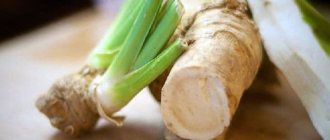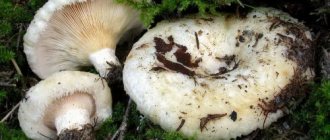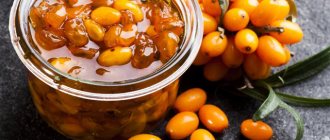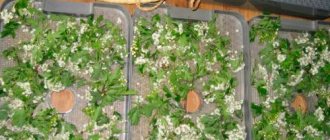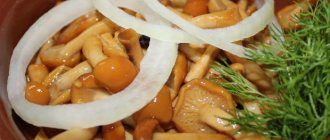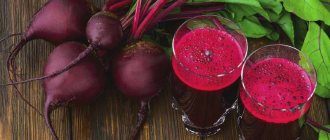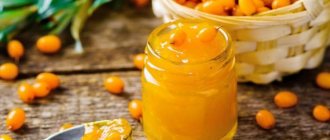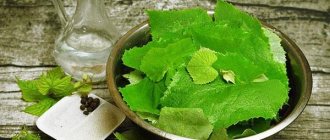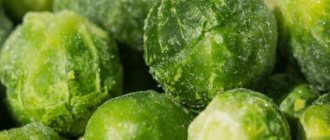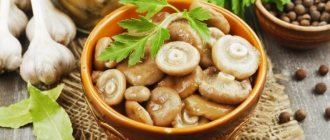People have long known the beneficial properties of hawthorn. Its fruits are added to food and tea is made from them. Remedies from hawthorn, both official and traditional medicine, are recommended for disorders of the cardiovascular system. To make such products, both flowers and fruits of this plant are used. Knowing how to store hawthorn, you can harvest it for the winter to prepare homemade medicinal potions all year round.
Hawthorn compote for the winter
Ready-made compote in a jar is never superfluous.
Most often, compotes are made from apples, cherries, and pears, but we suggest rolling up a couple of jars of hawthorn compote for the winter. It will be very sweet and appetizing, will diversify your diet and will simply delight you with its magnificent rich color. Ingredients:
- Hawthorn – 400 gr.
- Water – 3 l.
- Sugar – 400 gr.
Cooking process:
- Take fresh, beautiful hawthorn berries, sort them out from spoiled fruits, and rinse thoroughly in a colander.
- While the berries are draining, sterilize a three-liter jar with steam or boiling water, then place ripe hawthorn fruits in it.
- Pour clean cold water into the pan and add sugar. Place the pan on the fire and boil the liquid until the sugar dissolves.
- Pour the resulting syrup over the berries in the jar so that it covers all the berries. Seal the jar with a nylon lid and leave for about 15 minutes.
- After the time has passed, pour the syrup from the jar back into the pan and boil it again.
- When the syrup boils, pour boiling water over the berries up to the very neck of the jar and quickly roll up with a sterile lid.
- Turn the jar with the finished compote upside down until the compote cools completely.
How to store fresh hawthorn
Not every garden hawthorn is convenient to collect and store. It is better to choose large-fruited hawthorn, which, if necessary, can be easily removed from seeds.
The leaves, fruits, bark and berries of this plant cannot be stored fresh - they will simply dry out or begin to rot. If you wrap any part of this plant in paper, then it can safely wait in the refrigerator for up to 4 days.
But it’s better to use one of the methods for harvesting hawthorn for the winter:
- dry;
- to freeze;
- prepare a tincture;
- preserve.
Drinking tincture of hawthorn
Contrary to popular belief, not only medicinal tinctures are made from hawthorn, but also drinking ones. Using additional ingredients, you can prepare a flavorful alcoholic drink that will perfectly decorate any holiday table. However, if you have cardiovascular diseases, this tincture should be used only with the permission of a doctor.
Ingredients:
- Dried red hawthorn fruits – 1 tbsp.
- Cinnamon (stick) – 1 pc.
- Vanilla sugar – 1 pc.
- Natural honey (linden, buckwheat) – 1 tbsp.
- Ethyl alcohol 50% - 800 gr.
Cooking process:
- Place the washed, dried hawthorn fruits into a clean jar.
- Add cinnamon to the jar of berries and pour alcohol into the mixture of ingredients. Cover the jar with gauze and leave for three weeks, possibly longer: you want the tincture to acquire a rich color.
- Strain the tincture through clean gauze and squeeze out the berries. Pass the tincture through a cotton filter.
- Heat the honey in a water bath, add vanilla sugar to it, mix thoroughly.
- Pour the honey heated with vanilla sugar into the jar with the tincture and cover the jar with gauze again.
- After about a week, when a sediment of wax and other honey impurities forms at the bottom of the jar, strain the resulting tincture through a cotton filter again.
- The tincture is ready for use! You can pour it into a bottle and offer it to the table.
Hawthorn marshmallow
Pastila is a wonderful delicacy that, moreover, stores well. In addition, homemade hawthorn pastille is many times healthier than store-bought ones, and preparation is not difficult.
Ingredients:
- Fresh hawthorn fruits - 2 kg.
- Sugar - 400 gr.
Cooking process:
- Remove the hawthorn from the branches, sort the berries and wash them in running water.
- Place clean berries in a saucepan and add clean cold water to them. Water should cover the berries by one third.
- Pour granulated sugar into the pan, turn on medium heat and begin to boil the berries. When the mixture comes to a boil, reduce the heat and stir the berries occasionally to prevent the mixture from burning.
- Hawthorn berries should be cooked until they are soft and thickened. This will take about 30-40 minutes.
- The next step is to remove the seeds from the fruit. To do this, pass the berry pulp through a fine sieve so that it turns into a puree, while the pulp and seeds remain in the sieve.
- After this, we will begin preparing the delicacy. Hot jam should be spread in a thick, even layer over a surface that can be placed in the oven: a board or baking sheet with baking paper.
- The temperature in the oven should not exceed 70 degrees; the door can be opened slightly for air circulation. The drying process takes about eight hours.
- When the marshmallow dries, it will hold its shape when pressed, but will be elastic. You can cut it into strips or squares and store it in boxes.
Berries and medicinal parts of the plant - subtleties and timing of collection
Hawthorn blossoms begin at the end of May.
If you urgently need its fruits, collect them at the budding stage, but those who want to get a really high-quality harvest should wait. Make sure the hawthorn is healthy before harvesting any parts of the plant. Check it for mold, rust on leaves and branches, and the presence of pests. Hawthorn blooms profusely and quickly, especially in hot weather. When harvesting the plant, we cut off both corymbose inflorescences and individual swollen buds. It is not worth plucking the ovaries; because of this, the raw material often turns brown when dried. Warm, dry days are suitable for collection; the time is closer to lunch, when the morning dew on the leaves and inflorescences has dried.
Hawthorn berries on a branch
In order for the fruits to contain the maximum amount of vitamins, we recommend collecting them after full ripening, which lasts from the beginning of October until the first frost. You should not tighten too much, as the berries remaining on the branches will quickly be eaten by birds or they will crack from frost and begin to mold.
You can start picking berries for drying from the beginning of September. We determine maturity by color; it should be rich, bright red or orange.
Frozen and dried hawthorn fruits are used to make jam, jam or compote with dried fruits. Unlike berries, flowers can be harvested in early spring and continue to be harvested until early June.
Please note that hawthorn blooms profusely, but quickly. To carefully collect the inflorescences, trim with pruning shears and place them in a basket.
Hawthorn leaves are also collected for medicinal purposes. Compared to other parts of the plant, the leaves have less pronounced medicinal properties. It is recommended to collect them during the entire flowering period - from early May to June. Choose your workpiece material carefully. It is important that the leaf plates are free of damage, signs of fungal diseases and traces of insect pests. The leaves can be torn off by hand or used scissors, leaving at least 2/3 of the petioles on the branches.
Hawthorn bark is also considered a healing component. It is collected in early spring before the buds open during the period of active sap flow. Check for sap by lightly cutting the bark with a knife. Sap should come out from the wound. In addition, such bark is much easier to separate from the trunk. To collect bark, choose young shrubs no older than 4 years. To remove the bark, we cut down several shoots, make a couple of circular cuts on them to the middle of the wood and a long longitudinal cut. After this, the bark is easily peeled off and removed.
When to collect hawthorn fruits
The time for harvesting hawthorn fruits depends on the region where it grows. The crop blooms starting in the second half of May; in some species, flowering continues until the end of June.
Hawthorn berries, regardless of variety and type, ripen from August to September - October.
Only hard fruits without blemishes are collected. Damaged berries are left for birds or for later reproduction.
When to collect hawthorn leaves and flowers
Due to its beneficial properties, hawthorn is used not only in folk but also in traditional medicine.
Hawthorn flowers provide:
- A rapid vasodilator effect, tone the muscles of the heart, and also saturate the body with oxygen, normalize blood pressure.
- Calming effect, reduce excitability, irritability, relieve insomnia, anxiety and fear, therefore they are often used for diseases of the nervous system.
- They help with disorders of the digestive system, they are prescribed for the treatment of gastritis, they help get rid of intestinal gases, belching, heartburn and diarrhea.
- Strengthening effect on the body, restore immunity, regulate blood sugar levels, remove cholesterol from the body.
In cosmetology, plant flowers are used to restore skin moisture, they have tonic properties and relieve swelling.
With all the advantages, decoctions and infusions from flowers should be taken with caution by women during pregnancy and breastfeeding.
Flowers are harvested at the beginning of flowering, that is, from the end of May to the beginning of June.
Important! Hawthorn blooms well and abundantly, but fades quickly, sometimes in 5-6 days.
To collect flowers and leaves, choose dry, sunny weather after the dew has dried.
Important! It is not recommended to collect hawthorn located near busy highways, industrial zones, or hazardous waste storage facilities.
Hawthorn leaves are also used in folk medicine. Their collection begins even before flowering begins.
When harvesting, only green, clean leaves that are not damaged by insects and diseases are picked. You can tear off the leaves with your hands or with scissors, leaving the petiole.
Important! You should not tear off more than 1/3 of the leaves from a branch, so as not to disrupt photosynthesis.
hawthorn leaves and flowers
How to properly collect hawthorn for the winter
The time for harvesting hawthorn fruits begins when they are fully ripened and must be done before the onset of the first frost. 4
When collecting hawthorn fruits, adhere to the following rules:
- Fruit harvesting is carried out in dry, windless weather in the middle of the day, so that the morning dew has time to dry on the berries. Choose dry, not overripe fruits.
- Before you start collecting, you need to wear thick clothing to protect yourself from sharp needles on the bushes.
- It is recommended to collect from trees and shrubs located away from busy highways and industrial zones.
- They start picking berries from the bottom tier and gradually move up.
- A basket is best used as a container for collecting berries.
- You cannot pick all the berries from the tree; some must be left on the tree (shrub) for birds wintering in the region.
- Only whole and fresh berries are collected, avoiding unripe, rotten or damaged fruits by insects and birds.
- You should not pick the berries one by one from the bush; they are cut off in whole bunches along with the scutes.
- Place in a convenient container where the berries will not be crushed.
- It is best to collect fruits after the leaves have fallen, so the fruits are better visible.
Fruit pickers can be used to collect hawthorn fruits.
fruit picker for berries
Suitable varieties
Different varieties of this plant are grown in our country. If you want to harvest fruits for the winter, pay attention to the Blood Red or Siberian hawthorn. Also Common hawthorn (Smoothed). These varieties are in particular demand in pharmacology and folk medicine.
When to collect hawthorn for drying? The berries begin to be picked in early September, when they are fully ripe and have a rich red color. Berries are collected before the first cold weather begins (before night frosts).
When harvested, the scutes are torn off along with the fruits. That is, you need to harvest not one berry at a time, but the entire bunch with branches.
It is recommended to pick berries only in dry, warm, sunny weather. Many have noticed that shrubs often grow not only in the garden plot, but also in the wild (parks, forests, city limits). Please note that berries collected along busy roads, highways and major highways are not suitable for eating or drying, as they are capable of accumulating harmful substances and exhaust poisons. Such hawthorn will not bring any health benefits.
Dried hawthorn for the winter
Drying berries correctly is not as easy as it might seem at first glance. In order for the berries to retain their beneficial properties, you need to follow some rules. Our recipe will help you prepare the preparation correctly.
Ingredients:
- Hawthorn fruits (not overripe) - 1 kg.
- Sugar - 700 gr.
- Water - 300 ml.
Cooking process:
- Hawthorn fruits need to be sorted and carefully freed from seeds. The fruits should be slightly unripe so that they do not release a lot of juice.
- The berries should be placed on a baking sheet or other surface in a thin layer. Sprinkle the hawthorn fruits with sugar; 400 grams are needed for the indicated number of berries. Sahara.
- Berries sprinkled with sugar should rest in a room with a temperature of no more than 20 degrees throughout the day.
- During this time, juice will be released from the berries, which needs to be drained. You can use it at your discretion in preserving juices, compotes, and jams.
- Let's prepare the syrup. To do this, add water and 300 g to the pan. Sahara. The syrup must be boiled and the fruits added to it, then simmer (but do not let it boil!) for about ten minutes.
- Remove the syrup and berries from the heat and let the brew cool. After this, the syrup must be drained and the fruits placed on a baking sheet covered with foil. The syrup can be used in tea, compote or jam.
- Place the baking sheet with hawthorn berries in the oven, heated to a temperature of 80 degrees. Dry the berries for no more than half an hour, then reduce the temperature to 70 degrees.
- When another half hour has passed, let the berries cool and put the fruits back in the oven at the same temperature for half an hour.
- Cool the berry again and place it in an oven heated to 30 degrees for 4-6 hours. If the weather is nice and warm, you can put the fruits in a bowl, cover with a margin and dry in the sun.
- Make sure the berries are completely dry for 3-4 days, then store them in a dry jar.
The benefits and harms of hawthorn
Hawthorn is recognized as a gift of autumn. Popular large-fruited varieties for growing in gardens are: “Crimean”, “Chinese-2”, “Pauls Scarlet”, “Zbigniew”, “Bloody Red”.
Breeders advise paying attention to North American varieties: Arnold, fan-shaped (C. flabellata) and dotted (C. punctata). They have the most delicious fruits, bright red in color. The height of a hawthorn tree can reach up to 6-7 meters. It looks beautiful as a hedge.
From history, medical reference books indicate that hawthorn was previously used in folk medicine as an astringent for dysentery and diarrhea. In the 19th century, tea made from leaves and flowers was famous, which helped cleanse the blood. Later in the 20th century, the fruits of the tree began to be used in the treatment of the cardiovascular system.
Scientists have determined that hawthorn fruits have a rich healing composition, which includes:
- flavonoids, which can increase the tone of the heart muscle, affect the heart rate;
- fixed oils;
- organic acids;
- vitamins and microelements;
- pectins, which cleanse the body of waste and toxins;
- ursolic acid, considered the most valuable component. It is rarely found in other plants. Has hepatoprotective and antitumor effects. Ursolic acid stimulates collagen production. Therefore, for older women it is especially useful to use berries, which help prolong youth;
- fructose (very good for diabetics).
Hawthorn inflorescences, no less valuable in their composition, unlike fruits, have the following properties:
- normalize blood pressure;
- lower blood cholesterol;
- improve the functioning of the heart muscle;
- reduce the excitability of the nervous system;
- strengthen the immune system.
For a healthy person, the norm is to consume no more than ½ cup of hawthorn per day. Use in large quantities causes a sharp decrease in blood pressure and pain in the heart.
People with low blood pressure, as well as young children, should not take compotes, juices and other products based on tree fruits.
